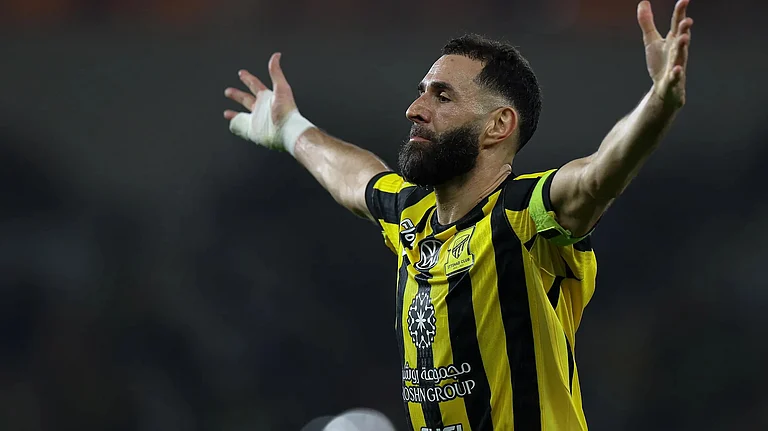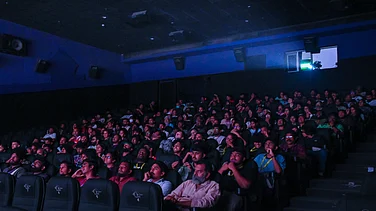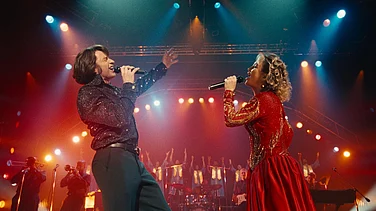Any widespread crisis has added terrors for the marginalised. For folks in the queer community too, the lockdown induced by the pandemic and the tardy return to status quo has been weighted with an anxiety that goes beyond a looming uncertain future, health scares, and a quest for the next pay check. Locked down in spaces where they don’t necessarily feel safe or comfortable has been a challenge that has forced many to coil up catatonically for the sake of fitting in.
This year, the month of June—globally celebrated as the LGBTQIA+ pride month, a season of celebration and self-assertion—went by in pandemic-induced lockdown, as the pressure of social distancing forced most to disconnect and disengage from one another. It has resulted in a burst of creative expressions of the queer community.
Whilst taking this year’s celebrations online has been the much needed ray of sunshine that ensured connectivity within the LGBTQIA+ community, it hasn’t been easy facing the egalitarianism of the internet. Nevertheless, the limitations placed through quarantine have provided a momentum to the quality and resilience in art, writings, and performances birthing out of this experience for the queer community of India.
On the challenges of creating art under the boxed in conditions of the pandemic, illustrator Veer Misra says, “I think we need to acknowledge that collectively we are feeling stuck, anxious and uneasy, not only because of the pandemic but also because of the constant barrage of upsetting developments across India and the world. At a time like this many people have turned towards creative outlets. A result is this larger artistic content that has been generated through Pride. It is forcing us to be more creative with our messaging.”
Pride in India is among the biggest creative annual milestones for the LGBTQIA+ community, with artists using a variety of mediums to express identity, sexuality, politics and aesthetics. It spans the Pride month and goes well beyond it. While things work a little differently in India, with events distributed through the calendar year across various cities, the summer is still a time when a confluence of events—creative, inclusive, and artistic—are hosted all around and have gone on to become safe havens for the queer community. “The upside is that people are realising increasingly that queer art is political in nature. You see, people are becoming less coy in calling out individuals and corporations on misrepresentation, holding them accountable for their actions. So there is an obvious rise in political queer art, especially in this current climate,” explains Misra.

Art has never been neutral, even when an artist claims not to take a stand or not to weave their socio-politics into their work, but with politics being immanent in art, some of it does support the status quo. “In the LGBTQIA+ community especially, we have families of birth and families of choice, when the former falls short accepting us, you can always turn to the latter,” explains Anish Gawande, co-creator of Pink List India, an organisation that grew out of a research project—an archive of queer-friendly Lok Sabha candidates to increase voter-awareness. This year, under the demanding conditions of the pandemic, Pink List diversified their area of activity by spotlighting the LGBTQIA+ community through a curated repository of queer-led and queer-friendly initiatives, organisations, and community projects which were enlivened through art works, illustrations, writings and visually rich pieces on their official social media channel, @pinklistindia.
Whether it is anxiety or the inspiration of having a platform upon which creative practices can be a means of driving forward dialogue, we are increasingly seeing a politically charged exchange in the art and literature created by LGBTQIA+ artists with the intention to educate and inform. In a poignant post on @pinklistindia’s social media page which introduced the Solidarity Foundation, Karnataka, is an exuberant depiction of “two gender non-conforming individuals in embrace, amidst the bookshelves and children’s artworks in the Solidarity Foundation’s office space”, created by artist Trinetra Haldar Gummaraju, blogger and queer rights advocate. Solidarity Foundation, based out of Bangalore, supports sex workers, gender- and sexual-minorities, and is one of the organisations spotlighted by Pink List India in a Pride initiative that married art with queer rights activism. The illustration is lively, bold, and particularly cheerful—amidst the racks of children’s books and artworks one can’t help but recognise it as an example of familiarisation, a role model for a younger, more empathetic and engaged generation.
Another illustration for Eya—an art and culture collective based out of Arunachal Pradesh known for organising poetry and storytelling sessions, mini exhibits and talks—by artist Samar Bansal addresses the first Pride march which took place on a rainy day in Arunachal Pradesh in 2019. While people hadn’t taken notice of the organisation’s efforts then, the community’s efforts had later been questioned, undermined, and their carefully built space for queer individuals brought on a people’s trial. Bansal’s illustration recognises the struggle and the effort of Eya in building that much needed safe space where queer conversations can be held, where a Pride March is recognised as the declaration of one’s authentic nature, a platform where the younger generation can feel empowered enough to understand gender, sexuality and queerness.

The LGBTQ movement must guard against tokenism and appropriation by those who don’t care for the struggle
There has always existed a symbiotic relationship between queerness and the digital realm in India. Many a coming out story in India stems from reading about LGBTQIA+ issues online before recognising it rings true in one’s own life, explains Gawande. In the backdrop of a hostile situation at home, a ‘community’ for many is exclusively situated online. Yet, navigating these spaces continues to pose a challenge. Understanding the digital audience in order to engage better with them both for building awareness and encouraging expression is a challenge.
The Queer Muslim Project, in their recent collaboration with the British Council for the Digital Pride Festival, navigated this by offering a range of queer art and cultural forms, concentrating on diasporic voices. “Taking the festival online increased access to a wider audience across geographical locations, which not only amplifies the artist’s voice but also becomes a medium of education, which is what one wants,” explains Rafiul Alom Rahman, founder and director, Queer Muslim Project. No Spring Chicken was one such offering, a live theatrical production by Theatre Jil-Jil Ramamani. Written by Vikram Phukan and directed by Lakhvir Singh Saran, it’s is about a university professor who comes to terms with his public outing in a portrait session with an artist. The challenge of directing and executing the play’s raw and emotive potential solely through an online medium was novel to both creators and the audience and an educative experience for both.
Whilst a truncated scope of activities and opportunities in times of the pandemic have been particularly cruel towards performers and artists from the LGBTQIA+ community, there has been no dearth of creative innovation. “Artists find a way to create, no matter what the conditions are. The drag shows at Kitty Su adapted to the lockdown by taking our entertainers to the doorstep of our patrons. Our online drag shows have received an overwhelming response. For many, it’s the first encounter with a drag show as the art form it is,” says Keshav Suri, executive director at The Lalit Sure Hospitality Group. For the drag community, online shows are a source of survival, with the Covid-induced slowdown adversely affecting revenue streams for many.
Perhaps the most crucial realisation stemming from the rainbow art of the LGBTQIA+ community (especially the pieces celebrating Pride) is that there is still need for a periodic reminder of the many discriminations, struggles, and stigmas the community continues to face. With more corporations in India stepping towards affirmative action, the danger of tokenism still prevails. It is more important than ever to conduct a dialogue that respects and values the queer community at a point when LGBTQIA+ rights are open to appropriation, whether by big corporations or political leaders, eager to parade themselves as champions of equality. The urgent need is to shun such appropriation, choosing instead to support and understand queerness as an equal right that surpasses caste, class, religion, region, gender, sexuality, and ability. It is through the efforts of its artists, writers, activists, and dramatists struggling to create a haven for queer art that we are moving towards such an inclusive society.

























